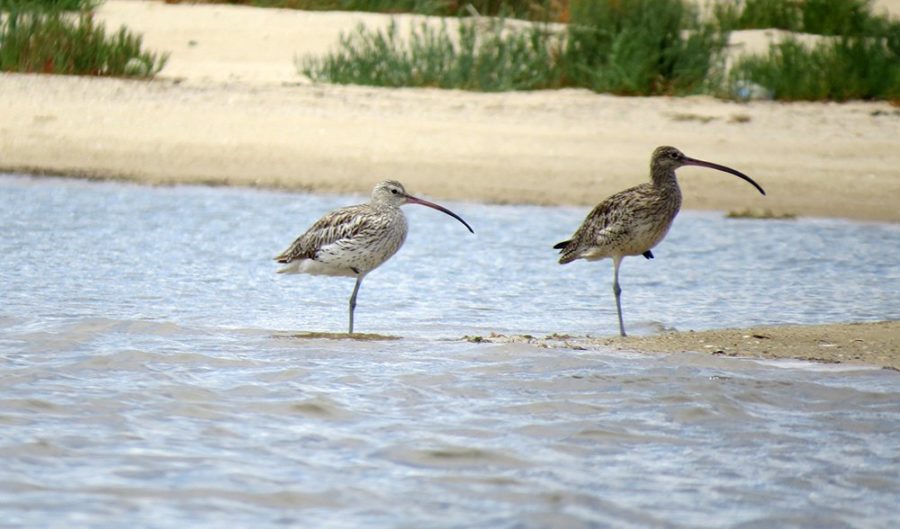Rare shorebird found in Western Australia

A group of birdwatchers has made a surprising discovery, after spotting a Eurasian curlew on the shores of the Leschenault Estuary, Western Australia – where it has never been seen before.
The Eurasian curlew embarks on a vast journey each year, migrating to Europe for breeding before returning to the shores of Africa and western Asia for winter.
But this particular vagrant – believed to be a juvenile – seems to have gone off-course.
On 19 January, camera-savvy Terry Wooltorton was kayaking through the estuary, 175km south of Perth with his bird-watching friend Richard Routh when they came across a pair of curlews on a sand bank.
Quick with his camera, Terry photographed the birds, before continuing on their journey.
Only when they looked back over the photographs did they realise they might have come across something special – when Richard’s wife and Bunbury Birdlife convenor Sue Kalab noticed subtle differences between the two.
“Sometimes it means nothing – but I sent it off to people with more knowledge and sharper eyes,” Sue said.
It took a couple of days – but after many mornings with the telescope and a few more pairs of eyes, they were certain this smaller, paler bird was not the regularly visiting eastern curlew, but in fact it’s Eurasian relative.
“There’s no mistaking it – the white rump and different plumage,” said Greg Harewood, local zoologist and environmental scientist.
Birdwatchers around the nation have reported seeing them in Broome, Darwin, the Lower Daintree in Queensland and on WA’s Eighty Mile Beach, but never in the Leschenault Estauary.
“It was thrilling – it was thrilling to be part of the discovery,” Sue said. “It’s a very beautiful bird.”
“An honoured guest”
There have been less than ten reports of the migratory species in the country – even fewer have been accepted by Birdlife Australia’s Rarities Committee – and news of its presence has got birders from around the country visiting Bunbury’s shores.
“Treat it as an honoured guest – like all of our migratory birds,” Sue added.
“They’ve got a long journey to prepare for and they’re just resting now.”
Multiple sightings of the bird have been recorded since January, and it can still be seen on the shores of the estuary, wading on the sand banks doing its best to blend in with a group of eastern curlews.
They are unsure of what will happen to the bird when the time comes to migrate –whether it will follow its eastern relatives north or its instincts will kick in to reconnect with its family for the journey back home.

